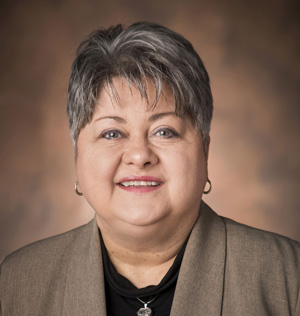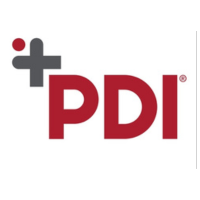The rapid advancements in oncology treatments—with new approvals in therapies like small molecules, biologics, biosimilars, and cellular therapies coming nearly every month—can be challenging for any nurse to keep up with, let alone truly understand the nuances of those approvals. As new discoveries unfold, the U.S. Food and Drug Administration (FDA) oversees the lengthy and multifaceted journey a drug or biologic takes from the laboratory to the patient. The ultimate goal of the many steps is to balance providing access to the latest treatments with ensuring patient safety.
What Is the Drug Approval Process?
The regulatory approval process begins with preclinical testing, in which scientists evaluate new treatments in the lab and on animal models for initial safety and efficacy. If the preclinical steps demonstrate promise, the drug progresses to clinical trials, which are conducted in three phases:
- Phase I tests the safety of the drug or biologic, dosage range, and side effects on a small group of healthy volunteers or patients.
- Phase II expands the study to a larger group of patients to assess the efficacy and further evaluate the safety of the drug or biologic.
- Phase III involves large-scale testing on diverse patient populations to confirm the efficacy of the drug or biologic, monitor side effects, and compare it to standard treatments.
After successfully completing all three phases, the product sponsor submits a new drug application or biologics license application to the FDA. The application includes comprehensive data from all testing phases, proposed labeling, and information on the product’s manufacturing process. Patient-reported outcomes and real-world data are also considered in the approval process to provide a more comprehensive understanding of a product’s impact on patient quality of life, beyond traditional clinical trial data. The FDA reviews the application, considering expert opinions and public comments, before making an approval decision. Of note, the FDA may require different levels of evidence between biologics and biosimilars.
What Do FDA’s Designations and Expedited Programs Mean for Oncology Nurses?
To bring life-prolonging products to patients more rapidly, the FDA created four submission categories for products to treat serious conditions or address unmet needs: fast track, breakthrough therapy, accelerated approval, and priority review (see sidebar and ONS’s Drug Development Terminology Huddle Card). In addition, in 2017, the FDA created the Oncology Center of Excellence to streamline the drug and biologic approval process for antineoplastic therapies. By integrating expertise across various disciplines, the center enhances the efficiency of FDA’s evaluations.

ONS member Teresa Knoop, MSN, RN, AOCN®-emeritus, former assistant director of clinical operations at the Vanderbilt Ingram Cancer Center Clinical Trials Office in Nashville, TN, presented the 2024 Pharmacology Update at the 49th Annual ONS Congress® earlier this year.
Nurses’ role: All oncology nurses need to have a basic knowledge of cancer drugs’ clinical trials and approvals so they can act in the patient’s best interest. “A nurse administering any oncology drug has an obligation to understand the specifics of that drug and be equipped to answer patient questions, particularly regarding safe administration and management of adverse events,” Knoop said.
She explained that most of today’s FDA-approved cancer treatments initially received accelerated approval, which require post-marketing surveillance (which may be achieved through phase IV trials) to monitor the product’s long-term effects and ensure ongoing safety. “If the final data changes in relation to efficacy or safety, the approval could potentially be withdrawn, so accelerated approval may not be the final step in the life of a drug.”
Nurses’ role: Nurses involved in those studies need to be vigilant in following protocols, and all nurses caring for patients receiving the agents must diligently report any adverse events.

ONS member Ashley Webb, MS, MN, RN, OCN®, CRN-BC, research nurse lead at Masonic Cancer Center of the University of Minnesota in Minneapolis, explained that product sponsors must have a business case to develop new drugs or biologics, so the incentives of accelerated approval help to support that case. Webb has been a part of several trials that were ended early because the company decided to focus on other products for financial reasons.
Although it’s not possible to take every drug and biologic that shows initial promise through all phases of clinical trials, the accelerated approval option incentivizes manufacturers to conduct studies on more therapies that have the potential to help patients, Webb said. However, clinical trials take time to build sufficient evidence to support full approvals—especially when it comes to understanding a treatment’s long-term effects.
Nurses’ role: Oncology nurses can educate patients about the approval status of their cancer treatment so they can make informed decisions, Webb said—including helping patients understand the current evidence and what is still under investigation.
How Direct Care Nurses Contribute to the Drug Approval Process
From patient assessment and education to monitoring and reporting adverse events (AEs), oncology nurses in all roles and settings are pivotal to steps along the entire drug approval process.
Nurses’ role: Initially, nurses help identify potential participants for clinical trials by reviewing patients’ medical histories, lab results, and other clinical findings for trial-specific criteria. This step also has the responsibility of recruiting a diverse range of participants who accurately represent the patient population who will ultimately receive the treatment—and helping to remove barriers that may limit participation from diverse groups.
Nurses’ role: Patients who are interested in participating need to understand their rights and responsibilities so they can provide informed consent. Here, oncology nurses can help answer questions about the clinical trial’s protocol, potential treatment-associated AEs, and the importance of reporting any effects to the study team.
“To provide optimal care to our patients who participate in clinical trials, direct care oncology nurses must work collaboratively with clinical trials staff and principal investigators to safely administer the drugs according to the protocol, as well as document and manage AEs," Knoop said. “Thorough training on safe administration, data collection, monitoring of AEs, and implementation of specific trial requirements are integral at launch and throughout the life of the clinical trial.”
Nurses’ role: Because oncology nurses form close connections with their patients, patients often confide their challenges to them—or nurses just sense something doesn’t seem right. Speak up and advocate for your patients, especially if they are experiencing issues related to a drug’s clinical trial.
Webb said patients who participate in clinical trials may have already gone through several lines of therapy and may underreport their side effects because some toxicities are “simply a part of their new normal.” However, the same symptoms with a different product can sometimes represent more serious toxicities, and it is important for the research team to know right away. For example, a patient might have chemotherapy-induced diarrhea with prior treatment and doesn’t expect any difference with a treatment change. If that patient is enrolled in a clinical trial for an immunotherapy with the potential for immune-mediated colitis, reporting diarrhea becomes critically important; however, the patient may not recognize diarrhea as significant because it seems normal to them.
Nurses’ role: Build a basic understanding of pharmacology and investigational agents’ mechanism of action. The Oncology Nursing Podcast’s Pharmacology 101 series provides oncology nurses with an evidence-based overview of antineoplastic agents according to drug class.
“By knowing the drug class or target, nurses can anticipate what toxicities might occur,” Webb said. “For example, when treating patients with an investigational CAR T-cell therapy, we could anticipate a need to monitor for cytokine release syndrome, since it is a known AE of CAR T-cell therapy.” Similarly, when giving a GPRC5D-targeting agent like talquetamab, nurses could anticipate skin and nail side effects because GPRC5D is also present on skin and nail cells, Webb explained.
Clinical trials usually require very specific procedures and monitoring to fulfill the requirements of the trial so that sufficient data can be provided to the FDA. For example, nurses may need to complete timed lab draws or take vital signs within specific time windows.
“Without this important information, study sponsors are unable to determine the appropriate dosing levels and schedules for future studies. The nurse collecting the blood at the correct time is incredibly important,” Webb said.
Nurses’ role: Document, document, document.
“If it's not documented, it didn't happen” is a maxim in oncology nursing for a reason, Webb said, especially for clinical trials. “There are multiple people from the site and study sponsor scrutinizing the documentation to make sure it would hold up in an audit by the FDA or other regulatory agencies. Making sure that documentation is clear and complete is an important way for direct care nurses to contribute to a drug’s approval process.”
For Direct Care Nurses, It Comes Down to Communication and Coordination
Patients receive study treatments across many settings, such as infusion centers, clinics, and inpatient care.
Nurses' role: To ensure study protocols are being followed accurately, nurses need to coordinate schedules, patients and staff, and information among settings.
“Interprofessional collaboration between clinical staff and clinical trials staff is key so that the care provided to a patient on a clinical trial is seamless, the patient receives optimal care, and the trial is conducted with scientific integrity,” Knoop said. “Collaboration ensures these patients have equitable access to trials and receive optimal care while participating in a trial.
“Communication between direct care nurses and clinical trials staff is crucial to the safe conduct of the trial,” Knoop added. “Oncology nurses need to be aware of cancer clinical trial opportunities and encourage patients to participate when appropriate.”
Webb encouraged direct care oncology nurses to maintain a spirit of inquiry for the drug approval process and to ask the research team questions such as, “What teaching points should I reinforce before the patient leaves today?” One way that oncology nurses can learn more is through ONS resources such as the Clinical Trials Learning Library. She added that oncology nurses who are interested in becoming more involved in the drug approval process may wish to explore clinical trials nursing roles.
“The pipeline of products going through preclinical development and clinical trials is astonishing,” Webb said. “It is exciting to think about how cancer care will change during our careers and what breakthroughs we will get to witness.”







